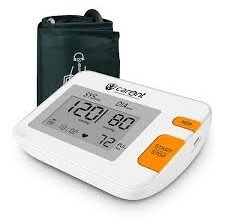How Climate Change Is Affecting Health in the U.S. What You Can Do
Climate change health impacts are worsening across the U.S Learn the risks and actionable steps to protect yourself and your community.

Climate change is no longer a distant threat it is actively harming health across the U.S. in alarming ways. Rising temperatures, worsening air pollution, extreme weather disasters, and expanding infectious diseases are creating a public health crisis that affects millions. Vulnerable populations including children, the elderly, low-income communities, and people with chronic illnesses face the greatest risks. However, by understanding these threats and taking action, individuals, policymakers, and healthcare leaders can help reduce the damage and build resilience for the future.
The consequences of climate change on health are already visible, from heat-related deaths to respiratory illnesses caused by wildfire smoke. Without urgent action, these problems will only intensify. This article explores the major ways climate change is impacting health in America and provides practical steps that everyone can take to protect themselves and their communities. By addressing these challenges now, we can safeguard well-being and create a healthier, more sustainable future.
How Climate Change Is Affecting Health in the U.S.: What You Can Do
More Frequent and Deadly Heatwaves
Rising global temperatures are making heatwaves longer, more intense, and more frequent. Extreme heat leads to heat exhaustion, heatstroke, and dehydration, with vulnerable populations such as outdoor workers, the elderly, and people with chronic illnesses at highest risk. Urban areas suffer from the “heat island effect,” where concrete and asphalt absorb and retain heat, making cities significantly hotter than rural areas. Without proper cooling infrastructure and public health interventions, heat-related deaths could rise dramatically in the coming years.
Worsening Air Quality and Respiratory Illnesses
Climate change is degrading air quality through increased ground-level ozone (smog) and wildfire smoke. Higher temperatures accelerate ozone formation, aggravating asthma, COPD, and other respiratory conditions. Meanwhile, longer and more intense wildfire seasons driven by drought and heat release dangerous particulate matter (PM2.5) that can penetrate deep into the lungs and bloodstream. Studies link prolonged wildfire smoke exposure to lung damage, heart attacks, strokes, and even cognitive decline. Poor air quality also contributes to anxiety and stress, compounding mental health challenges.
More Extreme Weather Disasters and Injuries
Hurricanes, floods, and droughts are growing more severe due to climate change, causing direct physical harm and long-term health consequences. Floods contaminate drinking water with bacteria and toxins, increasing outbreaks of waterborne diseases like cholera and dysentery. Droughts lead to water shortages, food insecurity, and malnutrition. Extreme storms cause injuries, drownings, and infrastructure damage, while prolonged power outages disrupt medical care for vulnerable patients. The mental health impact is severe, with many survivors experiencing PTSD, depression, and anxiety long after disasters strike.
Expanding Range of Infectious Diseases
Warmer temperatures and shifting rainfall patterns allow disease-carrying insects like mosquitoes and ticks to spread into new regions. Lyme disease, West Nile virus, and Zika once limited to specific areas are now appearing in places where they were previously rare. Rising temperatures also increase foodborne illnesses, as bacteria like Salmonella multiply faster in warm conditions. Public health systems must strengthen disease surveillance and prevention efforts to combat these emerging threats.
Mental Health Crisis from Climate Anxiety and Displacement
Beyond physical health, climate change is fueling a mental health crisis. Survivors of extreme weather events often suffer from trauma, grief, and long-term psychological distress. Additionally, “eco-anxiety” chronic fear about environmental doom is rising, particularly among younger generations. Displacement due to wildfires, floods, or rising sea levels also leads to emotional and economic instability, worsening depression and substance abuse in affected communities.
Food and Water Insecurity from Climate Disruptions
The climate crisis is severely disrupting our food and water systems, creating cascading health impacts that disproportionately burden vulnerable populations. More frequent droughts devastate crop yields while intense floods wipe out harvests, jointly driving up food prices and reducing nutritional quality a dangerous combination that leads to malnutrition, particularly among children and low-income families who already struggle with food access. Meanwhile, warmer temperatures trigger toxic algal blooms in water sources, and floodwaters contaminate drinking supplies with sewage and agricultural runoff, resulting in sharp increases in waterborne diseases like E. coli and cholera infections.
What You Can Do to Protect Your Health
Individual Actions for Personal Protection & Systemic Change
Every individual can become a frontline defender against climate health risks through three key actions: first, by vigilantly monitoring heat and air quality alerts to implement immediate protective measures like seeking climate-controlled spaces during dangerous heatwaves, using HEPA filters when wildfire smoke pollutes the air, and wearing N95 masks in high-pollution conditions; second, by actively shrinking one’s carbon footprint through daily sustainable choices including opting for public transit over personal vehicles, dramatically reducing home energy consumption through efficiency upgrades.
Healthcare Sector’s Role in Prevention & Sustainability
The healthcare sector plays a pivotal role in combating climate-related health threats by implementing a three-pronged approach: medical professionals must proactively educate patients about climate-sensitive health risks including heat-related illnesses, pollution-aggravated respiratory Climate Change, and expanding ranges of vector-borne diseases; healthcare facilities need to lead by example through sustainable operations that minimize their environmental impact, including transitioning to energy-efficient infrastructure, dramatically reducing medical waste.
Community Resilience Through Collective Action
Urban greening initiatives like tree planting and green roofs are essential strategies to mitigate the urban heat island effect and lower city temperatures, while simultaneously improving air quality and mental wellbeing. Communities must also invest in Climate Change-resilient infrastructure including flood barriers, upgraded stormwater systems, and designated emergency shelters to withstand extreme weather events. Equally important is strengthening community preparedness through comprehensive disaster training programs, establishing resource-sharing networks, and ensuring equitable access to life-saving cooling centers.
Read More: How to Monitor Your Blood Pressure at Home with FDA-Approved Devices
Conclusion
Climate change is transforming America’s health landscape, demanding immediate and sustained action from all of us. The evidence is clear – from deadly heatwaves to worsening allergy seasons, from mental health impacts to the spread of infectious diseases, no one is immune to these effects. While the challenges are significant, every individual action and policy change moves us toward solutions. By adopting climate-conscious habits, supporting sustainable policies, and advocating for vulnerable communities, we can mitigate these health threats while building a more resilient society.
The fight against climate change is ultimately a fight for public health. Protecting our environment means protecting our well-being – cleaner air means healthier lungs, sustainable cities mean fewer heat-related deaths, and proactive planning means stronger communities when disasters strike. While systemic changes are crucial, personal choices matter too. Together, through awareness, adaptation and collective action, we can turn the tide on climate-related health impacts and create a safer, healthier future for generations to come. The time to act is now.
FAQs
How does climate change affect mental health?
Climate change increases stress, anxiety, and depression due to extreme weather events, displacement, and economic instability linked to environmental disasters.
Who is most vulnerable to climate-related health risks?
Children, the elderly, low-income communities, and people with chronic illnesses are at higher risk due to limited resources and greater sensitivity to environmental changes.
Can improving air quality reduce climate-related health problems?
Yes, reducing air pollution lowers respiratory and cardiovascular risks while also slowing climate change by cutting greenhouse gas emissions.
How can individuals protect themselves from extreme heat?
Stay hydrated, avoid outdoor activities during peak heat, wear light clothing, and use cooling centers if available.
What role do healthcare providers play in addressing climate health risks?
Doctors can educate patients on climate-related health threats, advocate for policy changes, and implement sustainable practices in healthcare facilities.











4 Comments